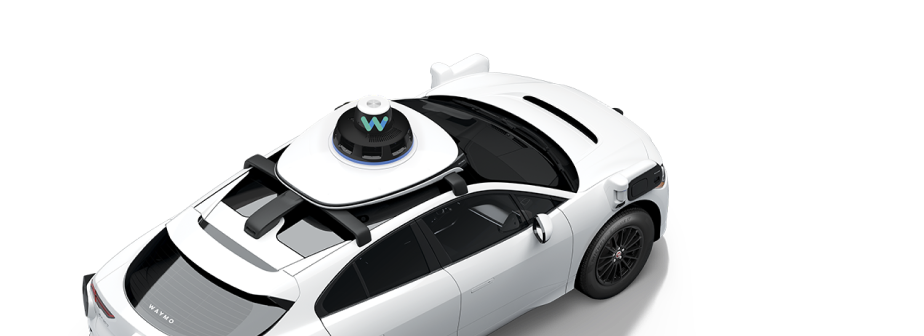Protecting Vulnerable Road Users: New Insights from Waymo’s Safety Research
Every day, millions of pedestrians, cyclists, and motorcyclists share the road with larger vehicles. Whether walking through crosswalks, biking in city streets, or riding motorcycles at a high speed on highways, these vulnerable road users (VRUs) face unique safety risks as they lack the protection that vehicles provide. In our latest research with Nexar, we reconstructed hundreds of crashes involving VRUs — the largest dataset of its kind in the U.S. — to better understand these risks and help inform our own driving as we serve more riders.
The National Highway Traffic Safety Administration (NHTSA) estimates 7,522 pedestrians and 1,105 cyclists lost their lives in traffic crashes in 2022 alone. Despite this, detailed data on collisions involving VRUs is scarce. Many incidents involving VRUs do not get reported to the police or insurance companies, and the U.S has limited VRU crash injury data collection in place compared to vehicle-to-vehicle collisions. Even major crash databases lack sufficient information on VRU collisions that is needed to fully understand and address the associated injury risks.
Over the years, Waymo has conducted multiple studies analyzing real-world collisions between VRUs and human drivers to gain deeper insights into the risks VRUs face and see how we can improve their safety. Our research has covered a wide range of scenarios, from reconstructing cyclist collisions in dense urban areas to examining injuries caused by car doors opening into bike lanes. We've studied the kinematic behaviors of micro-mobility vehicles like scooters and onewheels; assessed pedestrian injury severity distributions; characterized VRU pre-collision posturing and post-collision outcomes; and modeled injury risks for pedestrians and cyclists.
In our most recent study, we partnered with Nexar to reconstruct and analyze 335 collisions captured by their dash cameras that involve VRUs – pedestrians, cyclists and motorcyclists — and human-driven vehicles in six major U.S. cities. This anonymized collection represents the largest, documented naturalistic driving dataset in the U.S., offering unprecedented insights into real-world crash scenarios. By leveraging over 500 million miles of Nexar’s driving data, we've been able to capture a wide range of driving events and environments, providing a more comprehensive picture of VRU safety than ever before.
Analysis of crashes involving human-driven vehicles and VRUs shows that the risk of moderate (MAIS2+) and serious (MAIS3+ ) injuries varies among cyclists, motorcyclists, and pedestrians
As we reconstructed collisions, we analyzed the human-driven vehicle and VRU speeds as well as collision configuration to study injury risk estimates for each crash. The analysis showed that human drivers responding to surprising VRU behavior, not having full visibility, and the vehicle’s trajectory — for example, whether it was traveling straight or turning — were associated with differences in collision speed and injury risk estimation.
Analysis of collisions involving human-driven vehicles and VRUs shows that the risk of moderate (MAIS2+) injuries for each VRU type varies depending on the vehicle’s trajectory
The injury risk assessment was made possible by using models developed with Waymo’s research partner, VUFO. Our work helps fill the gaps in the existing VRU injury risk modeling, which is very limited and traditionally only focuses on relating vehicle speed or closing speed with injury outcome, not accounting for other factors such as VRU age, sex, and their size relative to the vehicle. To build more precise and holistic models, we leveraged the anonymized data from the German In-Depth Accident Study (GIDAS), which includes information on thousands of VRU crashes over more than two decades and represents the most relevant data available in the world today for estimating injury risk for VRUs involved in collisions with vehicles.
“We're excited to partner with Waymo on this cutting-edge research,” says Henrik Liers, Managing Director at VUFO. “Our common work addresses critical limitations in existing models and provides a more precise, interdisciplinary approach to assessing injury risk for vulnerable road users. This is a significant contribution towards improving road safety.”
Our research can help piece together a fuller picture of how often VRU collisions happen and how serious they are — rather than just counting crashes or measuring risks in isolation. Autonomous driving companies can use this data to evaluate an AV system's performance in simulations ahead of deployment and to measure its safety impact compared to human drivers.
Every week the Waymo fleet drives more miles than an average American in a lifetime, making a positive impact on road safety. Before deployment, we put the Waymo Driver through rigorous structured and simulation testing, including collision avoidance, and carefully evaluate its performance around VRUs. We’ve also taken measures to make sure VRUs feel confident around our technology. For example, our Safe Exit feature helps reduce “dooring” events with cyclists, and displaying easy-to-interpret iconography on the vehicles’ lidar dome informs pedestrians that we’re yielding to them. Many of these features have been informed by our close collaboration with community partners and VRU safety advocates such as San Francisco Bicycle Coalition, Streets Are For Everyone, Phoenix Babes Who Walk and many more.
Our research findings will help inform the continued development of the Waymo Driver and further improve its safety performance when sharing a road with VRUs. By continuing to study and understand the challenges faced by VRUs, we're taking important steps toward a future with fewer traffic injuries and fatalities.


